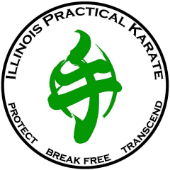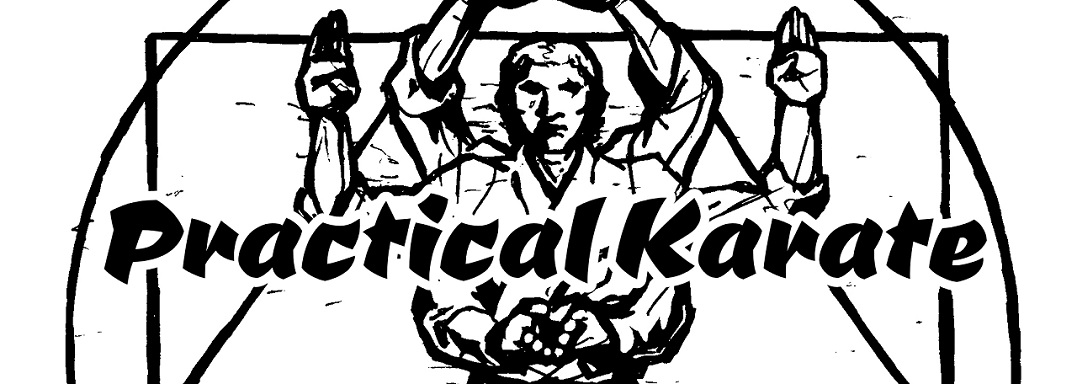-
Posts
2,825 -
Joined
-
Last visited
Everything posted by Wastelander
-
We certainly are!
-
I completely agree! I have done this throw against resistant partners, so I'm quite comfortable with it. The techniques you see in the "Walk the Line" drill video are fairly new to me, so I'm still working on them. Once I feel good about them against non-resistant opponents, I'll start working them on resistant ones. That said, from what I experienced working with Sensei Karlsson, I discovered that the harder you try to hit him, the easier it was for him to use his techniques.
-
Welcome to the forum!
-

gaining explosive lifting/pushing power without mass
Wastelander replied to chrisw08's topic in Health and Fitness
I'm afraid that what you're asking for isn't actually possible. Fast-twitch muscle fibers, which is what you need for explosive muscular power, are the largest form of muscle fibers. To become more explosive, you will have to build your fast-twitch muscle fibers, which means you will gain muscle mass. Even if you were going for endurance, which builds the smaller slow-twitch muscle fibers, it's likely that you would still build some mass over time. All that said, you aren't going to look like a body builder unless you train like a body builder. To build the kind of strength you want, you need to move heavy weights through full ranges of motion as quickly as you can, while still doing the movements properly, for 8 reps or less, for 5 sets or less. I will also point out that increased muscle mass doesn't automatically make you clumsy, stiff, and muscle-bound. If you balance out the muscles you are working, and stretch regularly to maintain flexibility, you will be just fine. -
I just ask him about it in private--sometimes, things change based on how the organization or his instructor want things done, and sometimes he changes things based on his own experiences. As far as management decision go, I'll give my feedback to him in private, but even as an assistant instructor, I don't get to make the decisions
-
Judo and Taekwondo are actually the two most popular Eastern martial arts in the world. Boxing and wrestling are the two most popular Western martial arts in the world. Karate is not as popular as any of them and, as skullsplitter mentioned, karate is divided up into so many styles and organizations that it is very difficult to come up with a competitive rule set. On top of that, the average Olympic viewer will not be able to tell the difference between karate and Taekwondo, so the IOC has no valid reason to include it. Kata could be introduced but, again, the average Olympic viewer will have no idea what they are watching, and would rather see physical movement skills in the form of gymnastics rather than kata.
-
This is certainly an interesting topic! The trouble is that most kata were created so long ago that it's impossible to really know their history. As you found out, even when a kata was created more recently, there is sometimes information about it that is missing. My favorite kata is Naihanchi, which is so old that we aren't completely sure who created it. It goes at least as far back as Sakugawa Kanga, who was my teacher's teacher's teacher's teacher's teacher's teacher's teacher. Although it is a very short and (seemingly) simple kata, it contains pretty much everything you need for self defense.
-
Welcome to the forum, Andreas! As Zaine explained, there is no evidence that such powers exist. It would be very cool if they did, though! Typically, when you see a display of such powers, it is actually the result of a type of hypnosis, or mental conditioning. That is a very interesting subject, itself, but it isn't any sort of psychic power.
-
I don't keep my training secret, because it's a major part of my life and I'm a pretty open guy. I have trained in parks, beaches, parking lots, garages, and yards without any issues. I also wear martial arts themed t-shirts, and will talk openly with people about martial arts. Of course, I do try not to be obnoxious about it, and I don't wear my gi or martial arts themed clothes to places that wouldn't be appropriate. I suppose it could be the Generation Y in me, but I just don't see the need to adhere to the "karate is my secret" maxim these days
-
Welcome to the forum, rasputin! Unfortunately, there isn't a "single source of truth" when it comes to martial arts schools. Your best bet is to visit the schools in your area, try out classes and talk to the instructors, and decide which one is the best fit for you. If you want more information before you make your decision, you can ask the instructors about their history/lineage and ask Sensei Google about them
-

Got my purple belt last night!!!
Wastelander replied to mazzybear's topic in Share Your Testing, Grading, or Promotion
Congratulations! -
1. Many dojo--particularly Japanese karate styles--don't do any weapons training. Some do, but it isn't as popular as karate. 2. Depends on how similar the weapons methods are to your karate, and how fast you are at learning, really. It isn't a rank thing, so much as the ability to learn the forms and techniques without getting it confused with your karate. 3. Can't really help you there, since I don't know anything about Australian laws--in my state in the US, I can own just about any weapon you can think of. I will say that techniques for bo, jo, hanbo, and sword all transfer over into just about any sort of long pole/stick-type object.
-

The toughest part
Wastelander replied to cheesefrysamurai's topic in General Martial Arts Discussion
Yakusoku kumite. They are largely impractical, with one or two practical bits thrown in, so I'm not as interested in them as our bunkai drills that are more free-form and practical. We also don't practice them all that much, and you have to learn both the attacking side and the defending side, so it's a lot of material to try to memorize. -
I can't speak from a Korean martial arts perspective, but from an Okinawan martial arts perspective, you are really too tall for a 4ft bo. The 5ft bo would work, but you should really be using a 6ft bo. I'm 6'1" tall and use a 6'6" bo, because your bo should (ideally) be taller than you. "Tapered" just means that the bo is thickest in the middle and then gets thinner toward the ends of the bo. That makes the bo lighter, which means you can move it faster, but it isn't as good for partner drills and doesn't make you as strong.
-

I'm going to a new dojo on Monday.
Wastelander replied to FangPwnsAll7's topic in General Martial Arts Discussion
That is definitely very, very strange. I would like to think it is some sort of joke that has gotten out of hand, but it's still not very respectful of him to brush off the concerns of one of his students. I applaud you for leaving a situation that was uncomfortable for you! Is your new dojo also Tang Soo Do, or is it a different style? -
A wise man once said, "there are no advanced techniques; only basics done in an advanced way." I honestly can't remember who that was, but he taught a seminar that my Sensei went to, years ago, and his advice stuck. Drill your basics until they are automatic. Only then will the more advanced techniques even make sense. Don't worry about how long it takes, either--you have the rest of your life to learn karate
-
Welcome to the forum!
-

Pullups and its effects on martial arts
Wastelander replied to chrisw08's topic in Health and Fitness
It occurred to me that I recommend "kettlebell clinch pull-ups" to people a lot, so I recorded a quick video demonstrating them over the weekend. -
Hello everyone, I recorded this video really quickly between classes yesterday to explain a throwing application for the morote-tsuki in Naihanchi for a friend of mine who asked about it. The audio is messed up because there was a CD player near the camera when I was recording, but hopefully what I'm trying to explain still comes across well enough--I didn't have time to redo it, at the time, but I'm hoping to make a better video on it later. It's nothing special, or groundbreaking, but I thought some people here might enjoy it, even if you can't hear the majority of what I'm saying . I added annotations for clarity.
-
You don't need to be in shape to start training in karate--it will get you into shape if it is trained with intensity and focus. When I started training in karate, I lost nearly 30lbs in a year. That said, you can certainly improve your karate by getting into even better shape than karate alone can get you.
-
I also like Safroot's post. A McDojo is any martial arts school that does anything it can to make money, and doesn't care about the quality of what is being taught. That said, there are also commercial schools--martial arts schools used to make a living for the instructors--that are NOT McDojos, because they keep quality up. Pretty much nothing is ever totally black and white
-
I practice kata, kihon, and goshin-waza in my living room, and do heavy bag work, makiwara work, and maize bag work in my garage. I've also trained in the woods, on beaches, and in a variety of other places, but not regularly.
-
After the UFC event on Saturday, I came across this article: http://bleacherreport.com/articles/1994748-johny-hendricks-vs-robbie-lawler-how-safe-sparring-may-change-contact-sports I have always thought that keeping contact (to the head, especially) on the lighter side is much safer and more beneficial than going all-out. It's interesting to see that idea gaining some traction.
-
I'm all for it--my dojo hosts open sparring events 3-4 times a year, and I periodically visit other schools to spar with them. Aside from the occasional person with something to prove, it always goes quite well. MasterPain has a very good point about the standing locks, though. Setting up rules and expectations in advance is definitely a must!


